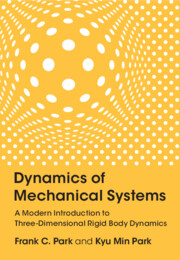Refine search
Actions for selected content:
3388439 results
Differential Calculus and its Applications
- Coming soon
-
- Expected online publication date:
- November 2025
- Print publication:
- 28 February 2026
-
- Textbook
- Export citation
Classical Mechanics
- Coming soon
-
- Expected online publication date:
- November 2025
- Print publication:
- 01 April 2027
-
- Textbook
- Export citation
Advances in Material Science and Applications
- Bulk (Silicon) vs Nano (Graphene)
- Coming soon
-
- Expected online publication date:
- November 2025
- Print publication:
- 01 April 2027
-
- Book
- Export citation
Control Systems Theory
- Coming soon
-
- Expected online publication date:
- November 2025
- Print publication:
- 01 April 2027
-
- Textbook
- Export citation
Industry, Trade and the State in Ptolemaic Egypt
- Coming soon
-
- Expected online publication date:
- November 2025
- Print publication:
- 30 November 2025
-
- Book
- Export citation

Eyes and Ears
- Secret Agent Work in Cold War China
- Coming soon
-
- Expected online publication date:
- November 2025
- Print publication:
- 30 November 2025
-
- Book
- Export citation

An Islamic Legal Philosophy
- Ibn ʿAbd al-Salām and the Ethical Turn in Islamic Law
- Coming soon
-
- Expected online publication date:
- November 2025
- Print publication:
- 31 December 2025
-
- Book
- Export citation

Dynamics of Mechanical Systems
- A Modern Introduction to Three-Dimensional Rigid Body Dynamics
- Coming soon
-
- Expected online publication date:
- November 2025
- Print publication:
- 30 November 2025
-
- Book
- Export citation

The Cambridge Companion to Matthew Paris
- Coming soon
-
- Expected online publication date:
- November 2025
- Print publication:
- 31 October 2025
-
- Book
- Export citation
Wales, Romanticism, and the Making of Imperial Culture
- Coming soon
-
- Expected online publication date:
- November 2025
- Print publication:
- 30 November 2025
-
- Book
- Export citation

Sexual Harassment between Doctors
- Healing Medical Cultures Around the World
- Coming soon
-
- Expected online publication date:
- November 2025
- Print publication:
- 30 November 2025
-
- Book
- Export citation

Shapes in Revolution
- The Political Morphology of Cuban Life
- Coming soon
-
- Expected online publication date:
- November 2025
- Print publication:
- 30 November 2025
-
- Book
- Export citation

Everyday Occupation
- American Soldiers and Chinese Civilians after World War II
- Coming soon
-
- Expected online publication date:
- November 2025
- Print publication:
- 30 November 2025
-
- Book
- Export citation

Historical Trauma
- Psychological Processes, Contexts, and Healing
- Coming soon
-
- Expected online publication date:
- November 2025
- Print publication:
- 31 December 2025
-
- Book
- Export citation

Representing Relationships
- Modes of Cognition and Connection
- Coming soon
-
- Expected online publication date:
- November 2025
- Print publication:
- 30 November 2025
-
- Book
- Export citation

Literate Workers and the Production of Early Christian Literature
- Coming soon
-
- Expected online publication date:
- November 2025
- Print publication:
- 30 November 2025
-
- Element
- Export citation

Fundamentals of Translation
- Coming soon
-
- Expected online publication date:
- November 2025
- Print publication:
- 30 November 2025
-
- Textbook
- Export citation
A Hundred Flowers
- How Literature Shaped Maoism
- Coming soon
-
- Expected online publication date:
- November 2025
- Print publication:
- 30 November 2025
-
- Book
- Export citation
Minds, Freedoms and Rights
- On Neurorehabilitation in Criminal Justice
- Coming soon
-
- Expected online publication date:
- November 2025
- Print publication:
- 30 November 2025
-
- Book
- Export citation

The U.S. Presidency
- Power, Responsibility, and Accountability
- Coming soon
-
- Expected online publication date:
- November 2025
- Print publication:
- 30 November 2025
-
- Book
- Export citation
